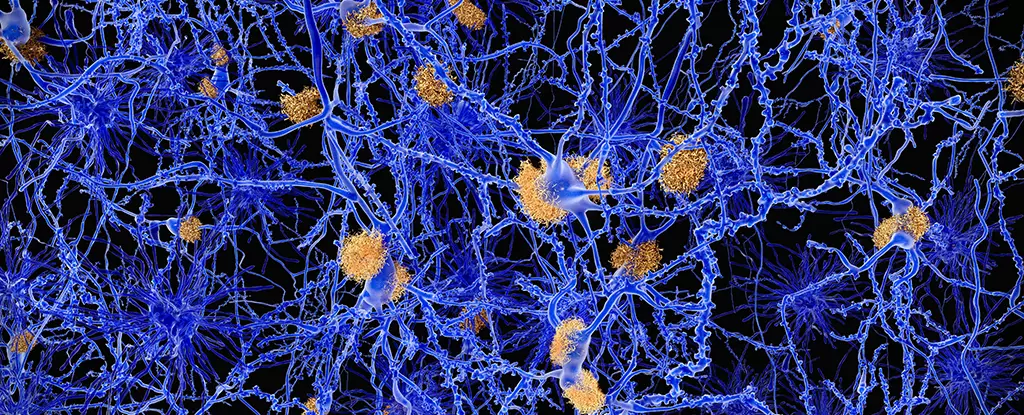The landscape of neurodegenerative disease treatment is often overshadowed by despair. Each statistic on Alzheimer’s raises eyebrows in disbelief, and every new diagnosis feels like a ticking time bomb for families. Yet, amidst this dire uncertainty, a beacon of hope emerges through cutting-edge science, revealing a groundbreaking approach that could fundamentally reshape how we tackle conditions like Alzheimer’s. Researchers have developed a nanomaterial ingeniously designed not merely to manage symptoms but, in theory, to combat the very roots of the disease at an unprecedented level.
This newly unveiled technology revolves around the ability to prevent the harmful aggregation of misfolded proteins that wreak havoc within the brain. With Alzheimer’s disease, amyloid beta proteins misfold and cluster into toxic plaques, resulting in damage to neural tissue—a calamity that cannot be overstated. Samuel Stupp, a materials scientist at Northwestern University, articulates the essence of the problem succinctly: “These proteins lose their functional folded structure and aggregate to make destructive fibers.” It is precisely here that this innovative nanomaterial, with its mesmerizing dual affinity for both fats and water, demonstrates its remarkable potential: Fishermen casting nets to scoop up the most troublesome catch, thwarting the path to degeneration before it even begins.
A New Biotechnology Approach
The treatment employs a fascinating combination of peptide amphiphiles and trehalose, creating a beacon of molecular engineering. While peptide amphiphiles themselves have drawn intrigue due to their dual nature, it is the inclusion of trehalose—a sugar known for its protective properties in various biological settings—that adds a new dimension to this therapeutic strategy. Trehalose’s role in stabilizing proteins hints at a broader understanding of how we might construct interventions that preemptively tackle misfolding.
In the marriage of these compounds, the researchers discovered a pathway that destabilizes the undesirable conformations of amyloid beta proteins. The implication of this finding is monumental: these misfolded proteins often take on the most toxic forms right before they enter neurons. By trapping these errant structures within a framework designed to neutralize their threat, researchers are charting a course towards reimagining the fight against Alzheimer’s. One could argue that this radical departure from traditional treatment methodologies could signify a new paradigm in combating neurodegenerative diseases.
Ethics of Innovation: A Cautionary Note
However, as the researchers revel in this groundbreaking advancement, it is imperative to tread cautiously. The ethical dimensions of such innovative treatments cannot be sidelined, even as we stand at the precipice of a new frontier. The initial stages of research necessitate rigorous testing before we embrace this technology in clinical scenarios. The complexities of human biology are inherently unpredictable, and what works seamlessly in a lab could yield dissimilar results in real-world applications.
Furthermore, systemic issues surrounding access to cutting-edge treatments must be addressed. Will these nanotechnologies be readily available, or will they remain a privilege of the few? This is especially critical as we face a global epidemic of dementia, with the World Health Organization estimating around 10 million new cases every year—a number poised to surge in tandem with our aging population. It becomes abundantly clear that any innovation that remains confined to elite circles will do little to combat the tidal wave of dementia that threatens to overwhelm society.
The Future: Integrating Science with Compassion
The exciting potential of this nanotechnology offers glimmers of optimism in a multi-decade struggle against neurodegenerative diseases. But the era of molecular engineering demands not just scientific breakthroughs but a holistic approach that incorporates compassion, ethics, and societal values in its application. As the discourse surrounding Alzheimer’s evolves, it becomes increasingly vital to ensure that scientific advancements don’t just remain lofty ideals in academic circles but transition into real-world solutions that are equitable and accessible to all.
As we continue to unravel the complex tapestry of neurodegeneration, we must balance ambition in research with caution in application, ensuring that our race towards innovation does not lose sight of the essential human aspects at play.



Leave a Reply